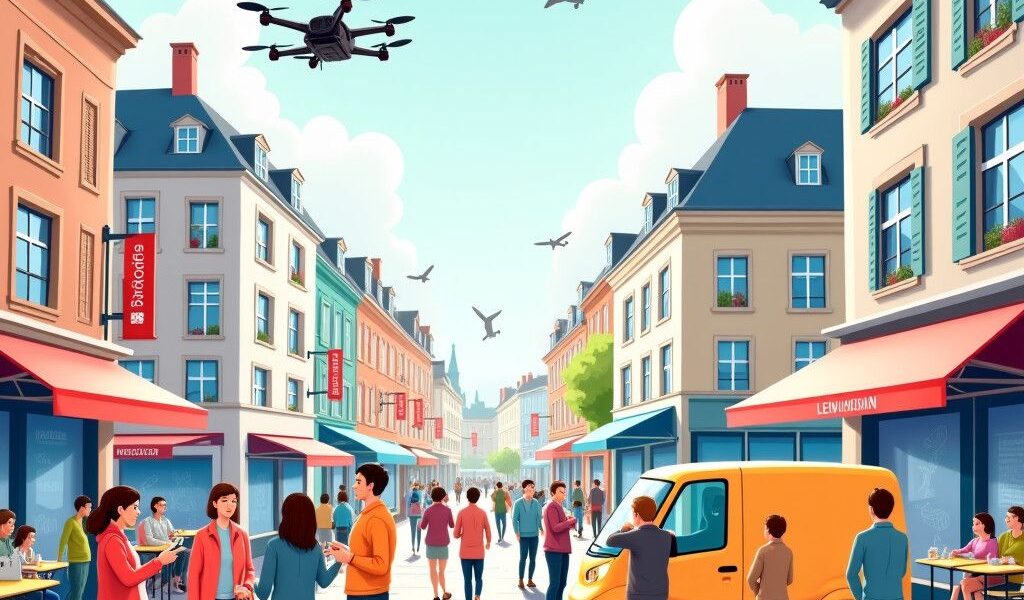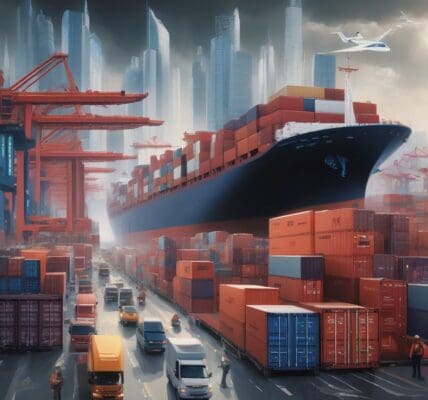The future is digital, and it’s already here. Across Europe, shoppers are clicking “buy now” like never before, and businesses are racing to keep up. But what’s really happening behind the scenes? Which countries are leading the charge, and what trends are shaping the way we shop? Thanks to the European E-Commerce Report 2024 from EuroCommerce and Ecommerce Europe, we can break down the continent’s e-commerce landscape, region by region, revealing who’s thriving and what’s changing.
Consider this: over 2.7 billion people buy online, contributing to a $6 trillion global industry. E-commerce is monumental. It offers convenience, speed, and a wider array of options than traditional brick-and-mortar stores could ever dream of providing. For consumers, e-commerce means newfound freedom. Shopping at midnight in pajamas, instant price comparisons, and the ability to purchase goods from sellers halfway across the globe has transformed the retail landscape. Long lines and crowded malls are now replaced with just a few clicks. Additionally, the abundance of online reviews ensures consumers know exactly what they’re getting before hitting “buy.”
The advantages extend beyond the consumer realm. Small businesses can access international markets without the need for physical storefronts. Larger brands benefit from enhanced scalability. Moreover, innovations such as AI-driven personalization enhance online shopping experiences, making them more tailored and engaging.
As e-commerce reshapes how Europe shops and sells, it becomes essential to understand the state of this dynamic market. Let’s explore key highlights from the report, revealing how different regions are responding to the digital commerce wave.
Western Europe: Innovation Meets Sustainability
Western Europe, home to countries like Belgium, France, Germany, and the United Kingdom, is at the forefront of e-commerce. With an astonishing 96% internet penetration and 83% of the population shopping online, the region embodies digital commerce innovation and resilience. In Belgium, laws mandate that retailers provide multiple delivery options while emphasizing sustainability, evidenced by consumers demanding clearer product information—like detailed sizing—which reduced return rates by 6%.
In France, an impressive 78% of the population shop online in 2024, thanks to sophisticated logistics and an expanding tech ecosystem. Germany is making strides with new data protection laws and a growing preference for re-commerce, especially as economic pressures influence buying habits. Meanwhile, the Netherlands faces regulatory challenges like Buy Now, Pay Later (BNPL) while championing circular economy initiatives.
The UK boasts a staggering 91% of its population engaged in e-commerce, primarily through Google searches. What sets Western Europe apart is its balancing act between innovation and sustainability. Companies in Germany are experimenting with reusable packaging, while the Netherlands is pushing for eco-friendly delivery initiatives.
Northern Europe: Diverse Trends and Opportunities
Northern Europe, which includes Denmark, Sweden, and Finland, showcases an impressive 98% internet penetration forecast for 2024, with 84% of the population actively shopping online. Denmark leads with a highly competitive e-commerce market, where smart payment solutions and parcel lockers are gaining traction. Sweden, despite experiencing slow growth due to economic constraints, is witnessing a rebirth in 2024.
Finland has seen a rise in low-cost goods from non-domestic sites, while luxury purchases concurrently increase. Although Estonia faced economic challenges, automation and AI adoption are opening new possibilities for businesses. Norway’s evolving omnichannel strategies reflect a blend between online and offline commerce.
Central Europe: Steady Growth and Digital Innovation
Central Europe comprises countries like Austria, Czechia, and Poland, showcasing a vibrant and steadily growing e-commerce market with 92% internet penetration and 71% of the population shopping online. Austria, despite inflation, embraces sustainable innovations and prepares for a deposit system for beverage packaging to further encourage eco-friendly practices.
Czechia benefits from a local e-commerce platform, Seznam.cz, driving significant growth, with re-commerce gaining traction. Poland stands out, boasting 94% internet penetration and innovative payment solutions, signifying a dynamic market growing more competitive.
Eastern Europe: Emerging Potential
Eastern Europe presents a landscape with significant untapped potential, evident as internet penetration reaches 83% and 53% of the population engages in online shopping. Romania leads with rising online purchases driven by improved internet access, while Bulgaria’s e-commerce sector witnesses remarkable growth.
Serbia shows promise as increasing digital literacy expands the e-commerce landscape. However, challenges in countries like Montenegro and North Macedonia indicate the need for further development. Meanwhile, Ukraine has shown resilience in the face of adversity, with a substantial e-commerce market emerging despite ongoing challenges.
Southern Europe: Unique Growth Pathways
Southern Europe, encompassing Spain, Italy, and Greece, displays steady growth despite various challenges. Internet penetration reached 91% in 2023, with 60% of its population engaged in online shopping.
Spain leads the region in digital transformation, bolstered by a 97% internet penetration and increasing consumer inclination towards sustainable logistics. Italy embraces omnichannel strategies while focusing on promoting locally sourced products. In contrast, Greece reveals a cautious digital consumer base, with only 58% engaging in online shopping despite substantial internet access.
Key Trends Shaping E-Commerce in 2025
Looking to the future, several trends are poised to reshape the e-commerce landscape as we transition to 2025:
1. AI-Powered Personalization: E-commerce businesses leveraging AI for personalized experiences see up to a 50% increase in conversion rates.
2. Immersive Shopping with AR and VR: Augmented and virtual reality are enhancing online shopping experiences; brands offering AR features report a 57% increase in purchase likelihood.
3. Social Commerce: With sales projected to hit $570 billion by 2028, platforms like TikTok Shop enable direct product purchases from social media.
4. Sustainability Practices: The emphasis on eco-friendly delivery and packaging choices is growing, with over 60% of UK shoppers favoring green options.
5. Cross-Border E-Commerce: Digital wallets and multi-currency payment systems are simplifying international transactions, tapping into a broader consumer base.
6. Quick Commerce: As demand for expedited delivery options rises, businesses must adapt to provide same-day or even quicker shipping alternatives.
The transformation in e-commerce is undeniable. Understanding these regional specifics and trends will enable businesses to strategically position themselves for success in a rapidly evolving landscape. Europe is on the cusp of a significant e-commerce boom, offering a plethora of opportunities for those willing to engage in this dynamic market.












